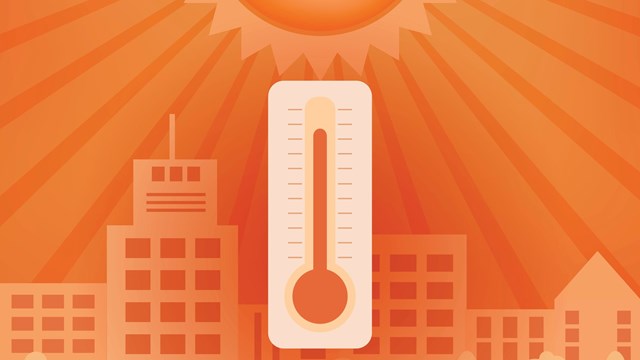With the green movement in full swing across the country, it is not surprising that incorporating energy saving and improved efficiency measures has trickled into condominium development. Today, many buildings in the Chicagoland area pride themselves for having a variety of eco-friendly features ranging from green roofs, the use of sustainable materials and recycling on-site.
While not all residential condominium buildings are built 'green” from scratch, there are numerous national and state wide energy efficiency, energy conservation and sustainability-encouraging programs available to residents. These programs often offer large rebates to help offset the initial costs of implementing the green products and technologies and doing so can greatly ease the burden of large utility bills.
State Incentives
With hundreds of incentive programs out there, it may seem like a daunting task finding one that fits the needs and goals of residents and the community. Doug Widener, executive director of the Illinois Chapter of the U.S. Green Building Council (USGBC), says that the first place to start would be with your utility company, many of which offer rebates and incentives to residents in the city and suburbs. Most companies have an entire web page dedicated to energy efficiency where boards and residents can search for programs that fit their particular circumstances.
Nicor Gas offers its customers rebates up to $1,500 for installing qualifying energy efficient equipment. Their Summer Staycation Program, running for a limited time until September 30th, features rebates up to $500 for purchasing and installing a qualifying natural gas furnace, $600 for a natural gas furnace and central air conditioner that meet certain requirement, as well as many more. “With this program customers have more and higher rebate opportunities than we have seen in the past,” says Chad Bulman, a Nicor Gas Energy Efficiency Program representative in Chicago. “The summer is not normally a time when residential customers spend a lot o f time thinking about natural gas equipment, they are more worried about cooling and air conditioning. We created this promotion to give customers a reason to consider their natural gas equipment during a time of year when they usually don't. We wanted them to have an opportunity to anticipate their heating costs of this winter and give them a reason to think ahead and plan for equipment replacement before they get caught with an emergency,” Bulman adds.
In addition, Nicor also has a Home Energy Efficiency Program offers cash rebates to existing Nicor Gas customers if they choose to replace their old natural gas equipment such as furnaces, water heaters and boilers, with newer, higher efficiency alternatives says Bulman.
More information can be found on their website: www.nicorgasrebates.com /heer/summer.
In addition, Nicor along with ComEd has a Multi-Family Home Energy Program available to properties, which use both companies. Created in June 2010, the program is “for any condo association or apartment complex and offers an energy efficiency program that installs energy-efficient products within each apartment or condo so that residents can start using those products and start saving electric, gas and water immediately,” says Crystal Martin, program manager at Honeywell Smart Solutions in Deer Park. The installation of the products is free and provides for a visit by a trained technician who will install digital programmable thermostats, up to eight compact fluorescent bulbs, water saving shower heads and high efficiency water aerators for bathroom and kitchen sinks in each unit for free. Martin adds that so far more than 50,000 apartments, condos and townhomes have participated in the program. More information is available at www.nicorgasrebates.com or go to www.comed.com.
National Incentives
Rebates and incentives are available for just about any type of energy-efficient product and alternative energy source under the sun. “For solar installations, the federal government is giving a 30 percent rebate on the cost of the installation which helps cut down the cost. Since HOAs are around for a long time, it makes sense to collectively buy and install solar or solar thermal,” says Sarah Wochos, senior policy advocate and the director of research at the Environmental Law and Policy Center in Chicago. “The HOA can then use the energy provided by the panels to offset the energy bills of the HOA. Through a program called ‘net metering’ any energy produced beyond the HOA’s needs and sent back to the grid can be ‘banked’ and used in future months. So if the panel produces too much power in July, the credits can be used in December when the panel is producing less energy.”
The federal government offers many programs and incentives that encourage energy efficiency while simultaneously expanding opportunities for home ownership. One such program is the 203(k) program which is administered through the Federal Housing Administration (FHA), which is part of the Department of Housing and Urban Development (HUD). The program is not for existing homes but rather for individuals who are looking to buy a home. Unlike single family homes, however, the program has certain specifications for condominium units including rehabilitation that is limited to the interior of the unit only and only the lesser of five units per condominium association, or 25 percent of the total number of units, can be undergoing rehabilitation at any one time, according to the HUD website. All projects must be approved by the FHA.
Federal tax credits are also available to residents who have qualifying energy efficient products. “Consumers can use an Energy Star search engine for special offers or rebates locally available,” says Dale Kemery, press officer at the U.S. Environmental Protection Agency (EPA) in Washington, D.C. “Not all Energy Star qualified products qualify for a tax credit, but there are tax credits in effect through 2016 on geothermal heat pumps, solar panels, solar water heaters, small wind energy systems, and fuel cells.”
Energy Star is a joint program of the Environmental Protection Agency and the Department of Energy that labels products that are energy efficient can help reduce greenhouse gas emissions. “The Energy Star label can be found on products across more than 65 categories, including appliances, lighting, heating and cooling equipment and consumer electronics. Products that earn the label deliver all the features and functionality of standard products, while allowing purchasers to save energy, save money and help protect the climate,” says Kemery. He adds that a typical household spends more than $2,100 a year on energy bills but Energy Star products can produce savings of one third or about $700. More information can be found on www.energystar.gov.
Two other databases already exist to help locate funding sources:
• The Database of State Incentives for Renewables & Efficiency, www.dsireusa.org, is a project of the N.C. Solar Center and the Interstate Renewable Energy Council with funding from the U.S. Department of Energy. It is organized by state and within each state by program type.
• The U.S. Department of Energy’s own website has a section on tax credits, rebates, and savings at http://energy.gov/savings.
Legislation to Go Green
As the benefits of going green are becoming more apparent, state and national governments are continuing to pass legislation to encourage the use of alternative energy sources and other eco-friendly products and methods.
Currently, the utilities in Illinois such as ComEd or Ameren are required to get a certain percentage of their power from renewable sources every year, says Wochos. “Starting next year, some of that renewable energy has to come from small rooftop systems; to date it has come from large utility-scale wind farms. They are right now figuring out how to structure the program so that it is easy for homeowners, HOAs and small businesses to participate. Participants will basically sell the power from solar panels to the utility instead of net metering. This will make it even more cost effective for people to install renewable energy,” she says.
In Illinois, the Homeowners’ Solar Rights Act prohibits HOAs from outright banning solar installations. “Rather, if a resident wants to install a panel, the HOA must come up with a plan that lists restrictions on installation—for example, no installation on the front of the building, no blocking satellite dishes, etc. but still provides a path for installation,” says Wochos. More information can be found on the act's site: www.ilga.gov/legislation/publicacts/96/096-1436.htm. She adds that there is a similar effort for electric vehicle charging stations, though that legislation hasn’t yet passed.
Harnessing the sun's energy has been gaining popularity as more and more residents look to the sun to fulfill part or all of their energy needs. The city of Chicago is right on board.
“There's a new initiative that the city is working on called Sun Shot Chicago and it's a program that is helping to standardize permitting to help with the adoption of solar panels in the city,” says Widener.
Wochos adds that “further on the renewable energy side, laws were recently passed to allow municipalities to aggregate the electricity usage of all the residents and small businesses and solicit an energy supplier on behalf of these residents and small businesses. Over 300 communities passed a referendum allowing their municipality to do this, and as these municipalities are signing contracts, many are negotiating to get more renewable energy than required by law. All the electricity providers in the state must get a certain percentage of energy from renewables, but many communities are going above and beyond. While this isn’t a direct incentive for HOAs, for those groups looking to ‘go green’ it is an opportunity to get engaged at the city level and help an entire community go green,” she says. Further details and the list of communities that passed the referendum can be found here :www.icc.illinois.gov/ORMD/MunicipalAggregation.aspx
With a variety of green incentive programs at their disposal, residents, board members and property managers have the resources and financial support to implement eco-friendly products and policies in their association, saving money and protecting the environment.
Maggie Puniewska is an editorial assistant at The Chicagoland Cooperator and other publications.







Leave a Comment